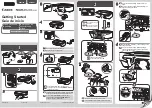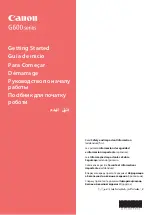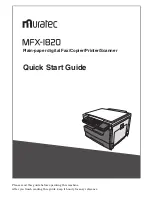
Argecy Computer Corporation 248-324-1800
20
•
Coated papers (erasable bond)
•
Multiple-part forms or documents
•
Preprinted papers that require a
registration
(the precise print location on the page) greater
than ±0.09 in., such as optical character recognition (OCR) forms
In some cases, you can adjust registration with your software application to successfully print
on these forms.
•
Preprinted papers with chemicals that may contaminate the printer
•
Preprinted papers that can be affected by the temperature in the printer fuser
•
Rough-edged or curled papers
•
Synthetic papers
•
Thermal papers
•
Less than 60 g/m
2
(16 lb) recycled paper
•
Recycled papers containing more than 25% post-consumer waste that do not meet DIN 19
309
Choosing preprinted forms and letterhead
Use the following guidelines when selecting preprinted forms and letterhead paper for the printer:
•
Use grain long papers for best results.
•
Use only forms and letterhead printed using an offset lithographic or engraved printing
process.
•
Choose papers that absorb ink, but do not bleed.
•
Avoid papers with rough or heavily textured surfaces.
Use papers printed with heat-resistant inks designed for use in xerographic copiers. The ink must
withstand temperatures of 205°C (401°F) for non-MICR applications, and 225°C (437°F) for MICR
applications, without melting or releasing hazardous emissions. Use inks that are not affected by the
resin in the toner. Inks that are oxidation-set or oil-based should meet these requirements. Latex inks
might not meet these requirements. If you are in doubt, contact your paper supplier.
Choosing prepunched paper
Prepunched paper brands can differ in the number and placement of holes and in manufacturing
techniques.
Use the following guidelines when selecting and using prepunched paper:
•
Test paper from several manufacturers before ordering and using large quantities of pre-
punched paper.
•
Paper should be punched at the paper manufacturer and not drilled into paper already
packaged in a ream. Drilled paper can cause paper jams when multiple sheets feed through
the printer.
















































